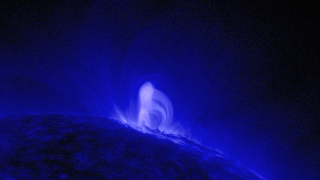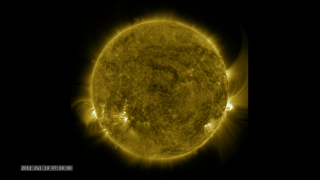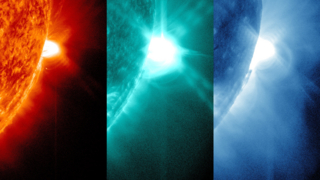Sun
ID: 11180
SDO Provides First Sightings of How
On July 18, 2012, a fairly small explosion of light burst off the lower right limb of the sun. Such flares often come with an associated eruption of solar material, known as a coronal mass ejection or CME — but this one did not. Something interesting did happen, however. Magnetic field lines in this area of the sun's atmosphere, the corona, began to twist and kink, generating the hottest solar material — a charged gas called plasma — to trace out the newly-formed slinky shape. The plasma glowed brightly in extreme ultraviolet images from the Atmospheric Imaging Assembly (AIA) aboard NASA's Solar Dynamics Observatory (SDO) and scientists were able to watch for the first time the very formation of something they had long theorized was at the heart of many eruptive events on the sun: a flux rope.
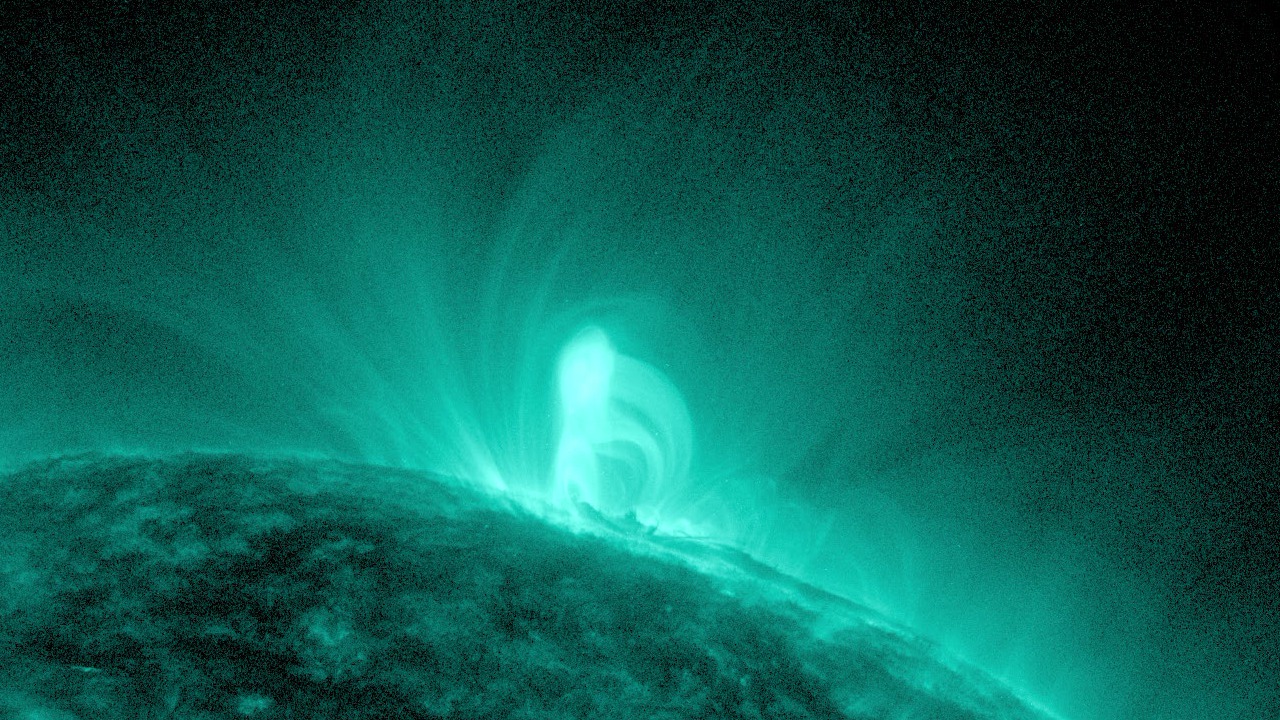

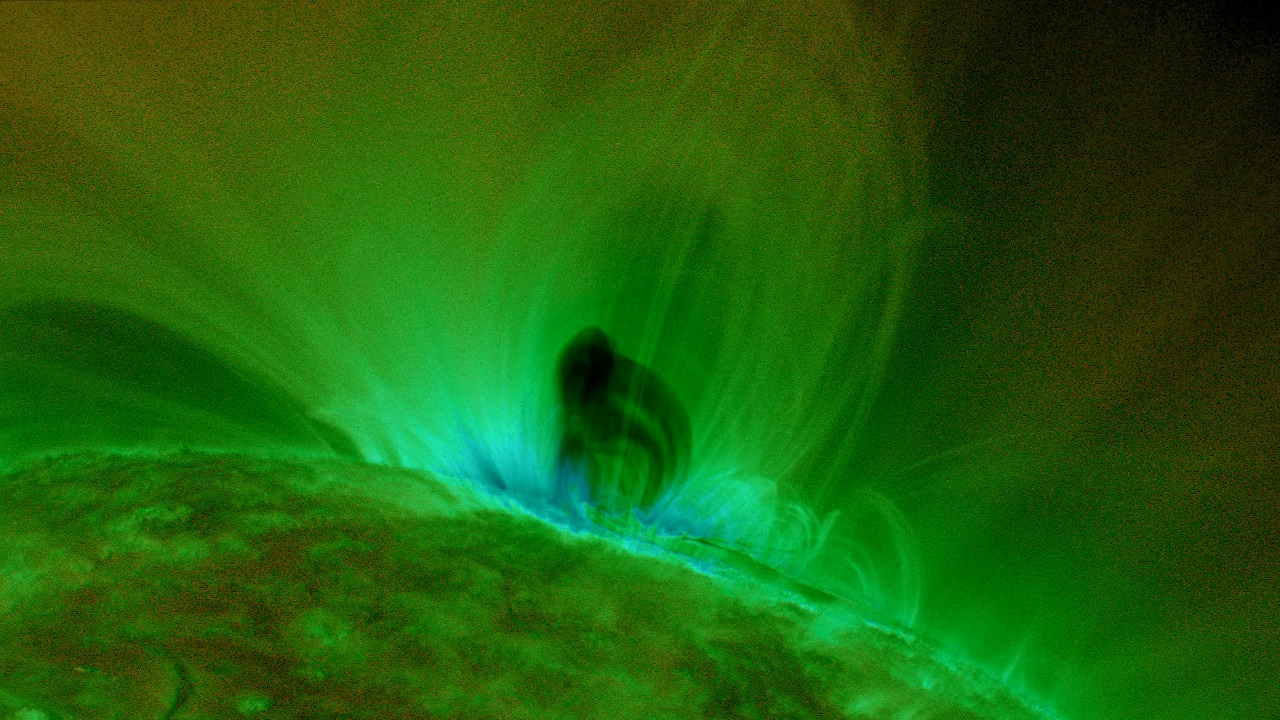

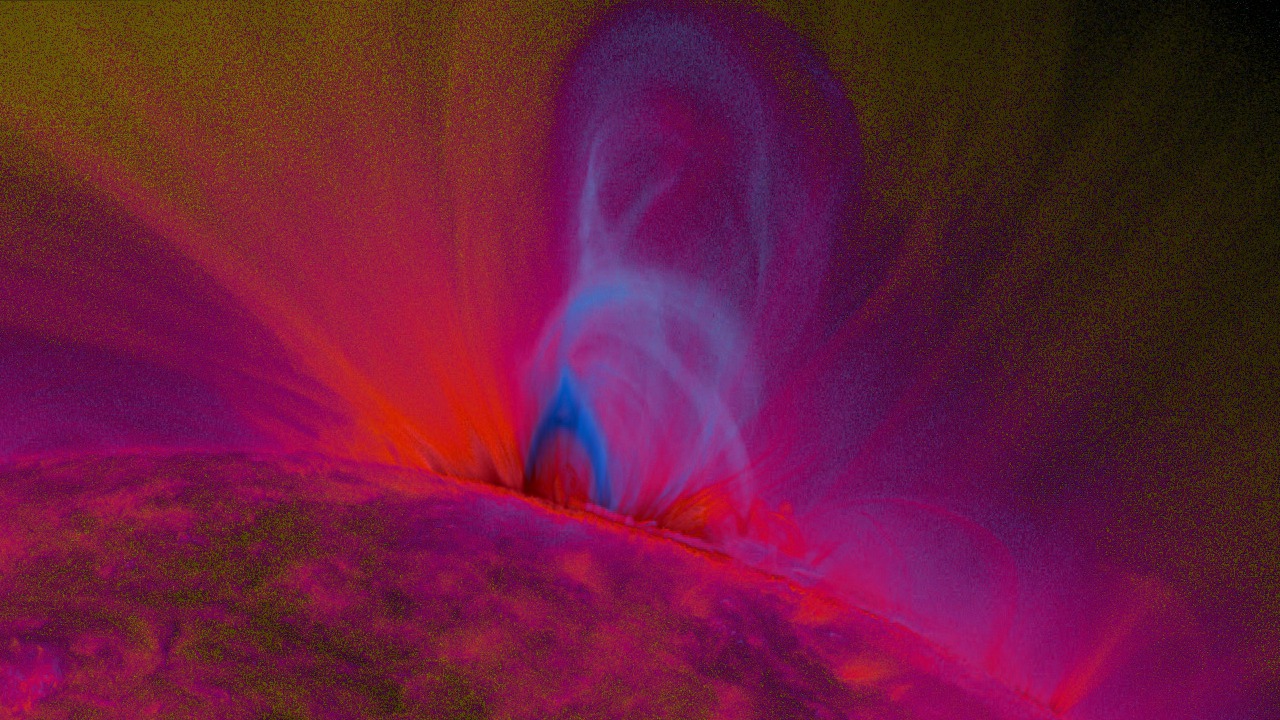
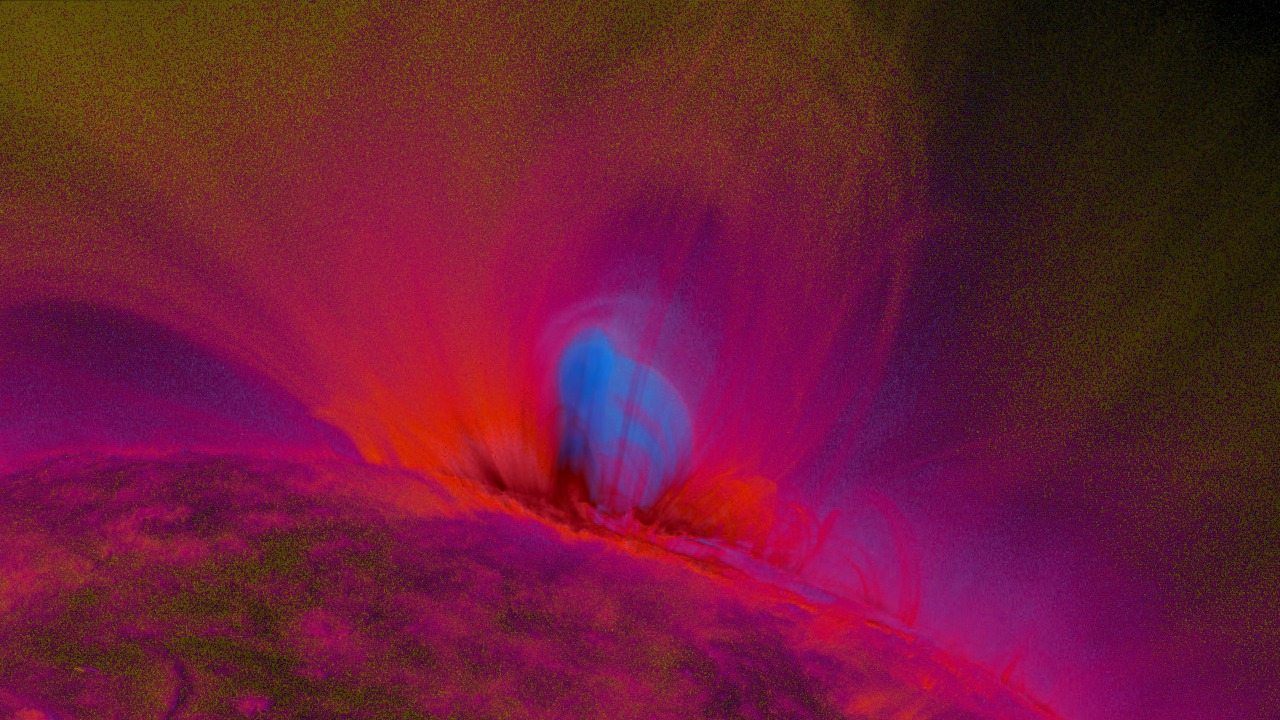

SDO Provides First Sightings of How
a CME Forms
Eight hours later, on July 19, the same region flared again. This time the flux rope's connection to the sun was severed, and the magnetic fields escaped into space, dragging billions of tons of solar material along for the ride — a classic CME.
More than just gorgeous to see, such direct observation offers one case study on how this crucial kernel at the heart of a CME forms. Such flux ropes have been seen in images of CMEs as they fly away from the sun, but it's never been known — indeed, has been strongly debated — whether the flux rope formed before or in conjunction with a CME's launch. This case shows a clear-cut example of the flux rope forming ahead of time.
Watch this video on YouTube.







Related
For More Information
Credits
Tom Bridgman (Global Science and Technology, Inc.): Animator
Scott Wiessinger (USRA): Animator
Scott Wiessinger (USRA): Video Editor
Scott Wiessinger (USRA): Narrator
Scott Wiessinger (USRA): Producer
Angelos Vourlidas (NRL): Scientist
Karen Fox (ADNET Systems, Inc.): Writer
Scott Wiessinger (USRA): Writer
Scott Wiessinger (USRA): Animator
Scott Wiessinger (USRA): Video Editor
Scott Wiessinger (USRA): Narrator
Scott Wiessinger (USRA): Producer
Angelos Vourlidas (NRL): Scientist
Karen Fox (ADNET Systems, Inc.): Writer
Scott Wiessinger (USRA): Writer
Please give credit for this item to:
NASA's Goddard Space Flight Center/SDO
NASA's Goddard Space Flight Center/SDO
Short URL to share this page:
https://svs.gsfc.nasa.gov/11180
Mission:
SDO
Data Used:
Note: While we identify the data sets used in these visualizations, we do not store any further details nor the data sets themselves on our site.
This item is part of these series:
Narrated Movies
SDO - Edited Features
Five Years of Solar Dynamics Observatory
Goddard TV Tape:
G2013-015 -- SDO Helps Solve Longstanding CME Mystery
Keywords:
SVS >> HDTV
SVS >> Magnetic Fields
SVS >> Music
GCMD >> Earth Science >> Sun-earth Interactions
GCMD >> Earth Science >> Sun-earth Interactions >> Solar Activity >> Solar Flares
GCMD >> Earth Science >> Sun-earth Interactions >> Solar Activity >> Solar Ultraviolet
SVS >> Space Weather
SVS >> SDO
SVS >> Edited Feature
SVS >> Solar Dynamics Observatory
SVS >> Heliophysics
DLESE >> Narrated
SVS >> Corona
NASA Science >> Sun
GCMD >> Earth Science >> Sun-earth Interactions >> Solar Activity >> Coronal Mass Ejections
SVS >> Extreme Ultraviolet Imaging
SVS >> EUV Imaging
GCMD keywords can be found on the Internet with the following citation: Olsen, L.M., G. Major, K. Shein, J. Scialdone, S. Ritz, T. Stevens, M. Morahan, A. Aleman, R. Vogel, S. Leicester, H. Weir, M. Meaux, S. Grebas, C.Solomon, M. Holland, T. Northcutt, R. A. Restrepo, R. Bilodeau, 2013. NASA/Global Change Master Directory (GCMD) Earth Science Keywords. Version 8.0.0.0.0
https://svs.gsfc.nasa.gov/11180
Mission:
SDO
Data Used:
SDO/AIA/131 Filter also referred to as: AIA 131
JOINT SCIENCE OPERATIONS CENTERThis item is part of these series:
Narrated Movies
SDO - Edited Features
Five Years of Solar Dynamics Observatory
Goddard TV Tape:
G2013-015 -- SDO Helps Solve Longstanding CME Mystery
Keywords:
SVS >> HDTV
SVS >> Magnetic Fields
SVS >> Music
GCMD >> Earth Science >> Sun-earth Interactions
GCMD >> Earth Science >> Sun-earth Interactions >> Solar Activity >> Solar Flares
GCMD >> Earth Science >> Sun-earth Interactions >> Solar Activity >> Solar Ultraviolet
SVS >> Space Weather
SVS >> SDO
SVS >> Edited Feature
SVS >> Solar Dynamics Observatory
SVS >> Heliophysics
DLESE >> Narrated
SVS >> Corona
NASA Science >> Sun
GCMD >> Earth Science >> Sun-earth Interactions >> Solar Activity >> Coronal Mass Ejections
SVS >> Extreme Ultraviolet Imaging
SVS >> EUV Imaging
GCMD keywords can be found on the Internet with the following citation: Olsen, L.M., G. Major, K. Shein, J. Scialdone, S. Ritz, T. Stevens, M. Morahan, A. Aleman, R. Vogel, S. Leicester, H. Weir, M. Meaux, S. Grebas, C.Solomon, M. Holland, T. Northcutt, R. A. Restrepo, R. Bilodeau, 2013. NASA/Global Change Master Directory (GCMD) Earth Science Keywords. Version 8.0.0.0.0
